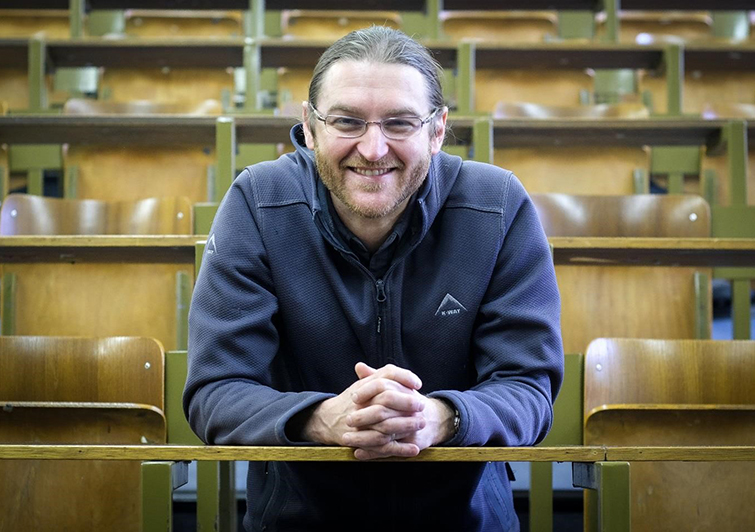Edwin Skhosana, an Actuarial Sciences student, was described by his lecturer,
Dr Michael von Maltitz of the
Department of Mathematical Statistics and Actuarial Science, as ‘very quiet’ in his Causal Inference class.
This may sound like a compliment, but it’s not.
For Dr Von Maltitz, being quiet is definitely not encouraged – not with the new teaching methods applied in class.
“See, my class is all about engagement – getting the students to watch videos on the topics, read about the methods in question, and then come to class to grill me about things they don’t understand. This change in teaching method is extremely disconcerting for many Mathematical students, who have up until now only been taught in the ‘memorise-regurgitate’ form they had ever since the start of high school,” he explains.
Future success“My goal is to get the students to a level of understanding where they can sit down with me or with an expert in the field and have a conversation about the Mathematical Statistics topics that I teach. This is a very difficult task in such a technical module, and few students ever feel comfortable enough to engage with me actively in class in this way,” Dr Von Maltitz points out.
Edwin is working hard towards applying the skills and knowledge he has obtained at university to become a successful and competent actuary one day.
An important turning point was when it dawned on him how the things discussed in class could find an important practical application in so many fields.
“This suddenly drove a spontaneous fascination in my mind that led me to engage with Dr Von Maltitz,” the previously quiet Edwin explains.
And everything changed.
Desperate to learn
Dr Von Maltitz explains: “Edwin came to my office to ask some questions. The incredible thing was that he sat down, and a conversation about the Mathematics, the foundations, and the methods just flowed between us. I have seldom had such an insightful chat about my module with a student. It was like a cascade of information just fell into place for Edwin.”
Although he sometimes still experiences his studies as challenging and grapples to adapt to the various styles of lecturing from different lecturers, Edwin now has hope for his class in Causal Inference.
“I think Dr Von Maltitz’s way of presenting in class is excellent. It is, however, hard to grasp if you are still anchored in the old way of cramming, because he wants you to understand and be able to apply what he teaches,” says Edwin.
“It was just wonderfully refreshing to see someone so desperate to learn something (rather than just wanting to get a degree), and then actually managing to turn around a bad semester mark into such a river of understanding,” Dr Von Maltitz concludes.

Dr Micheal von Maltitz